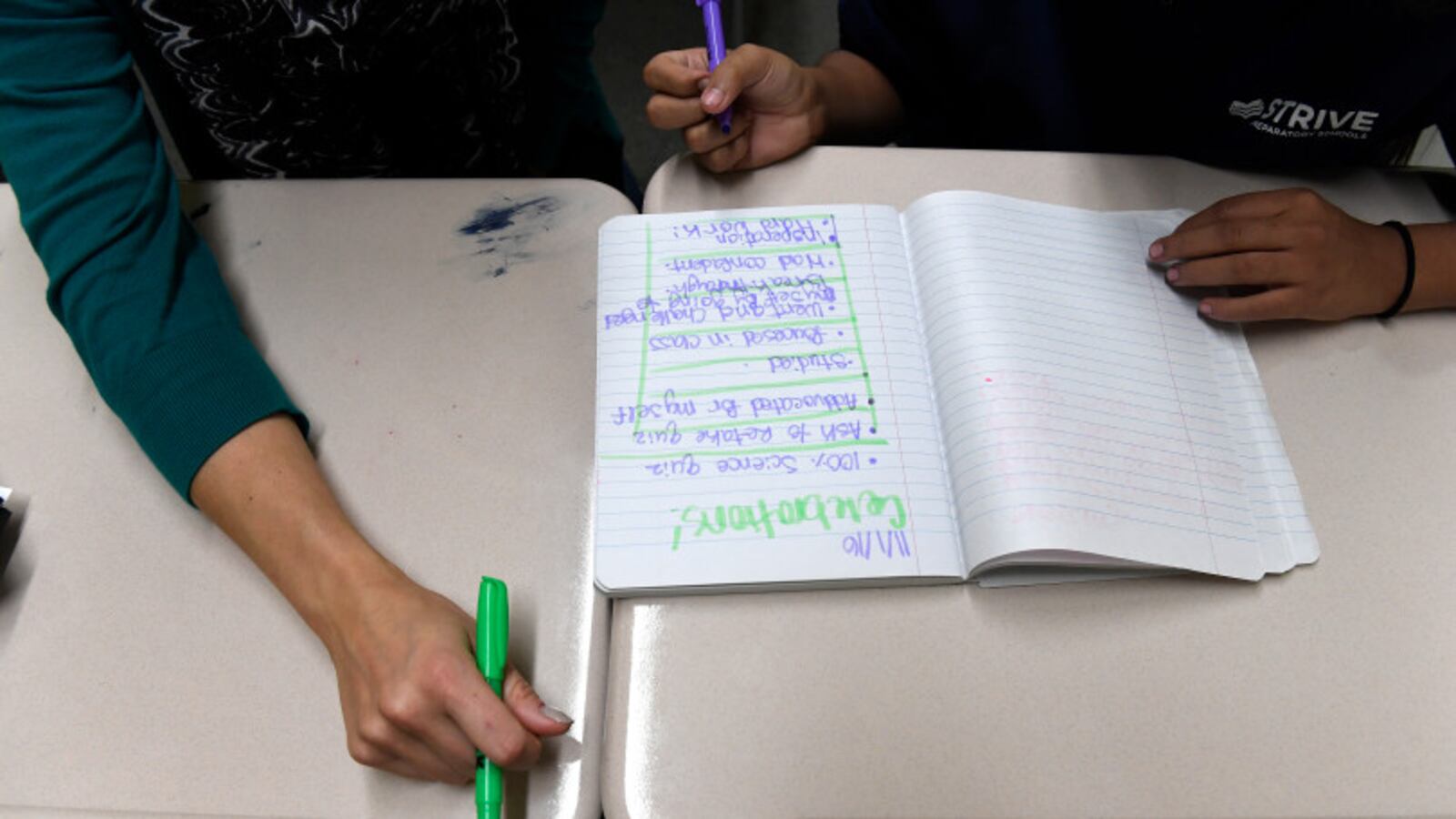Michigan is spending hundreds of millions of dollars to improve literacy as part of its tough new third-grade reading law.
But the architects of the law now say that’s not nearly enough money.
“I’ve come to that realization,” said Amanda Price, a former Republican state representative who was instrumental in passing the controversial law and remains one of its most prominent defenders.
Price’s concerns add to a longstanding criticism of the law: that the state isn’t investing enough money to actually improve student literacy.
Researchers agree that students who still struggle to decipher text in the third grade tend to continue to struggle through the rest of their K-12 careers and are less likely to graduate.
Michigan’s new law, called “read by grade three” by officials and “read or flunk” by others, was passed in 2016 in response to stagnant third-grade reading scores.

The “flunk” part of the law — a requirement that schools hold back third-graders who fall too far behind in reading — has gotten the lion’s share of public attention. Critics say retention is emotionally damaging and that students from low-income families will be disproportionately affected. Gov. Gretchen Whitmer, a Democrat, just announced that her administration will partner with philanthropies to help families apply for exemptions to the law.
Florida and New York City invested heavily in strengthening instruction for struggling readers when they passed their own third-grade reading policies. Both saw their scores improve. New York City used the money to put struggling readers in smaller classes and give them access to methods of instruction tailored to their needs.
But Michigan, where fewer than half of students are proficient in reading, has spent much less proportionally than those places on new literacy policies.
Over the last five years, Michigan spent roughly $192 million on policies targeting early literacy, from literacy coaches for teachers to summer school for struggling readers.
That may sound like a lot of money, but it only adds up to $89 per student per year divided among Michigan’s 430,000 students in grades K-3.
By contrast, Florida spends about $154 on early literacy per K-3 student per year, and it has a lower poverty rate for young children than Michigan.
“I think it’s enough to make a dent, but not enough to get us where we need to be,” Nell Duke, a professor at the University of Michigan who studies how children learn to read, said of the state’s spending on literacy.
A lack of funding has become an issue in other states experimenting with third-grade reading laws. Educators in Alabama have warned that the state’s law could become a “train wreck” when it goes into effect in two years, in part because the state hasn’t yet found funding for literacy-related teacher training.
Some aren’t convinced that it will take more money to help kids read. Beth DeShone, executive director of the conservative advocacy group the Great Lakes Education Project, said schools should be able to improve reading instruction without spending more money.
“We should be looking at systemic problems that get in the way of student learning, like ensuring current spending is focused on what really matters, ensuring our teachers are properly equipped in the classroom, and finding out why more of the current funding isn’t making it directly into the classroom to support teachers and students,” she said.
DeShone’s organization supports holding students back if they struggle to read — the most expensive part of the law in per pupil terms. Depending on how many students are retained — one estimate puts the number at between 2,000 and 5,000 — the cost could be between $16 and $40 million per year.
“If you’re talking about holding back two or three thousand kids, that’s $30 million that you could be using for evidence based interventions,” said Dean Elson, chief knowledge officer for Reading Partners, a national nonprofit that places reading tutors at schools.
To be sure, even critics of the law acknowledge that the threat of retaining students has put literacy on the front burner for state policymakers.
“The amount of sunlight that this law has placed on this subject is unheard of around any topic that I can remember,” said Adam Zemke, a former Democratic state representative who helped design the law but ultimately voted against it over concerns about retention.
“I definitely think the law has helped,” he added. “Is it sufficient in terms of funding? I don’t think it is.”
Duke has argued that the money spent on holding kids back would be better spent on evidence-based efforts to improve literacy.
For instance, Michigan has already spent $50.5 million on the literacy coaches, but Duke pointed to a study showing that this strategy is effective when there’s one coach for every 14 teachers.
“We are nowhere near a 1 to 14 coach-to-teacher ratio in the state,” she said.
For years, the state instructed districts to spend additional money on third-grade reading. With students set to be retained for the first time this year, districts may be diverting funds from other programs to help students avoid being retained.
Katharine Strunk, a professor at Michigan State University and who is studying the costs of the law, said school districts are likely “spending additional dollars to implement the law on things like literacy curricula, assessments, and services.”
In some cases, districts are going far beyond complying with the new law.
In Dearborn, a suburb of Detroit where 40% of students are English learners and 74% are economically disadvantaged, administrators began focusing on literacy before the law was passed in 2016. They used federal funds to build a “kindergarten catch-up” program, essentially hiring their own literacy coaches to focus on reading instruction in the early grades.
Dearborn, which has 21,000 students, isn’t expecting any to be held back under the third-grade reading law. Only 30 scored below the minimum score of 1253 last year, and they would all have qualified for various exemptions allowed in the law.
Jill Chochol, Dearborn schools’ executive director of student achievement, said new funding directly connected to the law is only playing a small role in the district’s efforts.
She added that those efforts didn’t come without other costs.
After spending more money on reading, “we have less money to put new roofs on, repair boilers, and update some of our buildings,” she said.
Editor’s note: Jan. 29, 2020: A previous version of this story included an enrollment count for the Dearborn district. It has 21,000 students.

